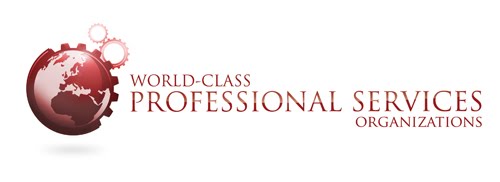In my experience, non-billable work can be categorized in four ways:
1. Work given away by the project team
2. Work given away by PSO management
3. Work given away by the sales team and/or sales management
4. Work given away by the executive team
Regardless of where the ‘give away’ originates, a PSO must have policies and processes for managing and tracking what work is given away (and in what situations) and how the non-billable work is managed with the client.
Work Given Away by the Project TeamProject teams rely on the Project Manager to manage scope. Technical leads, business analysts, and other team members should never have sideline agreements with members of the client team to do work that is not clearly specified in the SOW. While the SOW defines the guiding principles – or project charter - for the project team, it is unlikely that every detail of every requirement will be uncovered during the pre-sales process. Therefore, an effective change control process should be implemented to allow the consulting and client teams to work together to change the scope of work as needed.
Many change requests are designed to increase or reduce scope, requiring the project budget to increase or decrease in kind. The consulting team needs to evaluate the change request and inform the client of the effect that the change will have on the project schedule and cost. (In my experience, many change requests that must be added to the project, are not so important when the customer learns what the added cost will be.)
At my core, I believe that all work performed by the consulting team should be paid for by the customer. However, having spent the majority of my career in project management roles, I have learned that the no-charge Change Request (CR) is a very powerful tool – allowing the team to give a little to get a little (or a lot). The no-charge CR allows the consulting team to develop goodwill with the customer. Issuing these change requests allows the team to approach the relationship with the client from the position of “partnership.”
So, there are times when a Project Manager may chose to write a no-charge CR. In addition to the opportunity to develop goodwill, as discussed above, there are times when the change does not add any additional consulting time to the project. This can be the case when the customer wants to change a requirement on which the consulting team has not worked and the change represents the same level of effort as the original requirement. Even when there is no change in the level of effort or cost to the project, the Project Manager should issue a Change Request to document the new agreement between teams, allowing all parties to understand the differences between the original agreement and the ultimate deliverable.
However, Project Managers should also be empowered to issue a no-charge change even when the change requires more work. This may happen if the consulting team has made a mistake that caused some amount of pain on the part of the customer. The no-charge CR may rebuild a, potentially, damaged relationship. It may also be advantageous to issue a no-charge CR when the project team knows of a larger request that is coming down the road - bigger changes result in larger bookings and revenues. The smaller no-charge CR may leave customers feeling like “this” team is willing to work with me. The customer doesn’t feel “nickelled and dimed” and the larger, billable CR, may be easier to get executed. A good project manager understands when it is appropriate to issue a no-charge CR versus one for which the client must pay.
That said, PSO management must provide project managers with a process for managing give away work:
1. All changes must be documented, even when the change will not result in additional charges for the customer.
2. Only the project manager can agree to a change, although s/he should solicit input from the rest of the team.
3. Only small changes can be provided as non-billable. Anything that puts the schedule at risk should be billable.
4. You may want to set a cap on the size of the non-billable CR to which a project manager can agree without management approval.
5. A Change Request Board (CRB) must approve all CRs, even the non-billable CRs. The CRB includes representatives from the client and consulting teams. You may want to have PS management on the board, particularly when your less senior project managers are running projects.
The next post will discuss non-billable work given away by PSO management.
